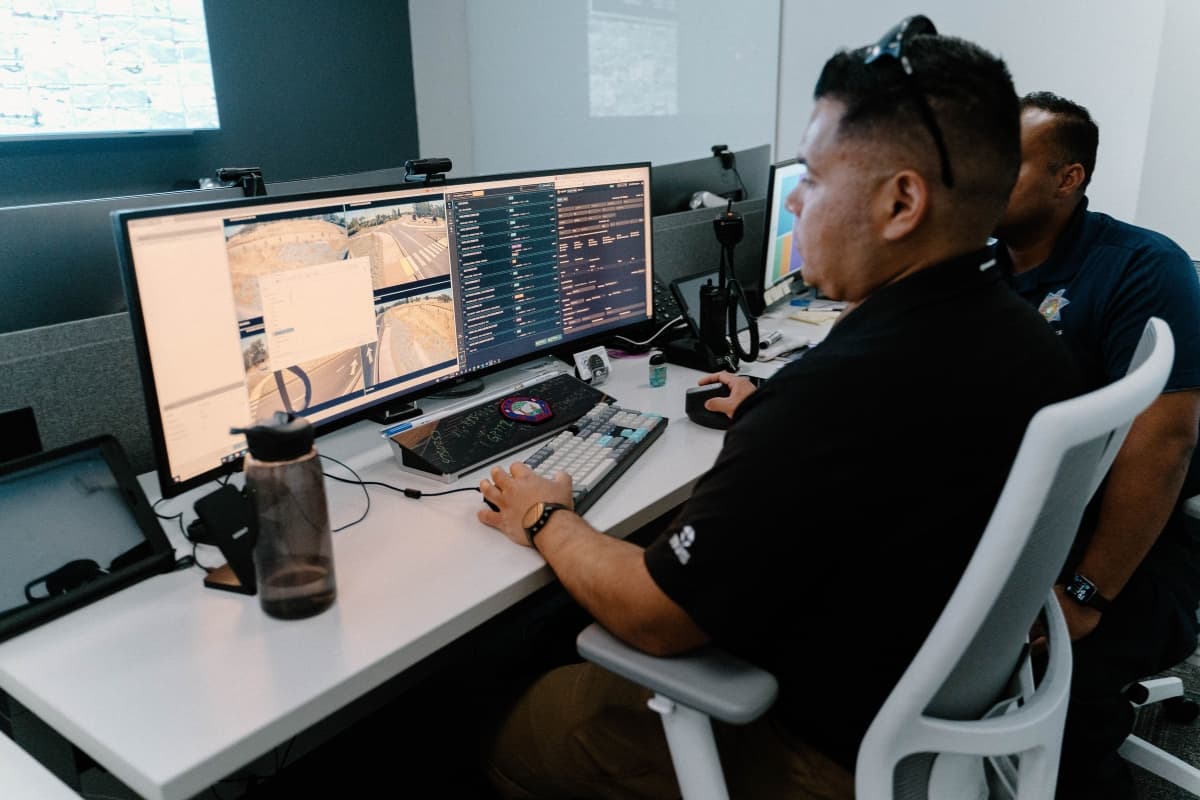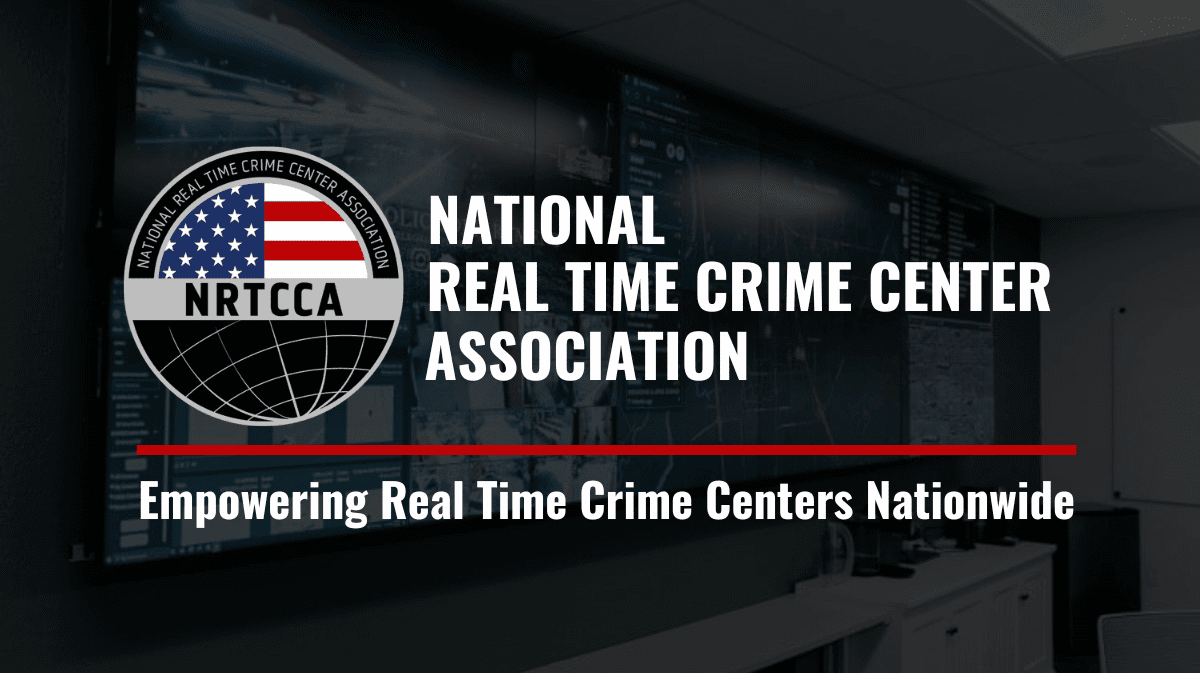
The Crucial Need for Physical and Mental Health Awareness Among Real-Time Crime Analysts
By Erik Lavigne, Communication Director, NRTCCA
The role of a real-time crime analyst is undoubtedly one of the most demanding and high-stress jobs in public safety. Analysts are the backbone of law enforcement, providing critical data and insights in emergency situations and ongoing investigations. While their work is essential to the safety of our communities, it comes at a cost to their physical and mental health. In this article, we will delve into the importance of physical and mental health awareness for real-time crime analysts, highlighting common signs and symptoms of these issues and offering strategies to mitigate their impact.
Physical Health Challenges
Sedentary Lifestyle: Real-time crime analysts often sit for extended periods during their shifts, which can lead to health issues like obesity, cardiovascular problems, and musculoskeletal disorders. To counter this, analysts should take regular breaks to stretch and walk around.
Poor Diet: Irregular shifts can disrupt eating habits, leading to unhealthy diets. Encourage analysts to plan and pack nutritious meals and snacks for their shifts to maintain energy levels.
Sleep Deprivation: Erratic work schedules and the stress of the job can result in sleep disturbances. Promote good sleep hygiene by creating a dark, quiet, and comfortable sleep environment during daytime sleep hours.
Mental Health
Chronic Stress: The constant exposure to complex crime data and high-stress situations can lead to chronic stress. Analysts should be encouraged to utilize stress management techniques such as deep breathing exercises, meditation, or counseling services.
Compassion Fatigue: Repeatedly dealing with sensitive case data can lead to compassion fatigue, making it difficult to empathize with the gravity of the crimes. It’s essential to provide a support system where analysts can debrief and share their feelings.
PTSD and Anxiety: Some analysts may develop post-traumatic stress disorder (PTSD) or anxiety due to the nature of their work. Early recognition of symptoms like flashbacks, nightmares, or persistent anxiety is crucial. Provide access to mental health professionals who specialize in trauma therapy.
Isolation: The nature of real-time crime analysis work can be isolating. Encourage analysts to foster social connections outside of work, both with colleagues and their support networks.
Burnout: Long hours, high workload, and emotional exhaustion can lead to burnout. Implement policies that limit overtime and ensure adequate staffing to prevent burnout.
Support Systems
Peer Support: Establish a peer support program where analysts can confide in colleagues who understand the unique challenges they face.
Mental Health Services: Ensure access to confidential mental health services, including counseling and therapy, specifically tailored to real-time crime analysts’ needs.
Training and Education: Provide ongoing training on stress management, emotional resilience, and mental health awareness.
Regular Check-Ins: Supervisors should conduct regular check-ins with real-time crime analysts to assess their well-being and offer assistance when needed.
Real-time crime analysts play a vital role in law enforcement, but their job comes with inherent physical and mental health challenges. Recognizing the signs and symptoms of these issues and implementing proactive support systems is essential to ensure the well-being of these dedicated professionals. It’s time we prioritize the health of those who provide invaluable insights to maintain our communities’ safety.
Enhancing Decision-Making with Situational Awareness and Common Operating Pictures
By Bob Marcus, President, RGB Spectrum
Situational Awareness has become a pivotal aspect of decision-making in dynamic operational environments. Initially coined by the military, the term has transcended its roots and found general applicability, shaping how organizations approach complex operational scenarios. Its essence revolves around comprehending and responding to unfolding situations by accessing relevant data through accessible networks, including visuals from cameras and sensors, dashboards, graphical data, news feeds, and other data sources.
A multifaceted approach comprises data acquisition, processing, distribution and presentation. Real-time video monitoring and access to stored data play a critical role. A network capable of seamlessly transmitting data from one point to another may encompass baseband video, ethernet, and telephone networks, and RF systems, all working in conjunction to ensure the timely flow of information.
Powering Global Situational Awareness
RGB Spectrum, a leader in video distribution and display solutions, introduces Zio AV-over-IP, a flexible platform for video distribution over local area networks (LANs), wide area networks (WANs), and telephone networks. The scalability of the platform ranges from single room setups to enterprise-level implementations and global video distribution. This technology empowers organizations with real-time data sharing on a global scale, enabling decision-makers to stay connected and informed regardless of geographical constraints.
The Essence of Real-Time Processing and Low Latency
In scenarios demanding quick decision-making, the importance of real-time video processing and low latency cannot be overstated. RGB Spectrum understands that every fraction of a second counts when lives and critical assets are at stake. This drives the development of video distribution and display equipment engineered to provide real-time video processing. This distinction sets equipment designed for decision- support apart from less demanding digital signage solutions.
Curbing Clutter with Multiviewing
In dynamic environments, information overload can hinder effective decision-making. A console covered with multiple screens and control devices can lead to operator distraction and decreased focus. The solution lies in a multiviewer, a video processor capable of simultaneously displaying multiple images on a large monitor (aka a single pane of glass), allowing operators to more easily focus on key information, without the distractions of excessive clutter or multiple control devices.
The concept of multiviewing is found in several of RGB Spectrum’s products, including the newly introduced XtendPoint KVM-over-IP solution, which replaces up to eight separate monitors with just two multiviewers.
Facilitating Collaborative Decision-Making
In scenarios where collaborative decision-making spans remote locations, ensuring all participants have access to relevant data is paramount. In addition to distributing data to each participant individually, RGB Spectrum offers a streamlined alternative—an innovative approach that allows team members to replicate a multiview monitor or video wall to share it as a single visual across an Ethernet network. This ensures that a common operating picture is accessible to all stakeholders, promoting collaboration regardless of physical location.
With RGB Spectrum’s Zio AV-over-IP and XtendPoint KVM platforms, organizations enhance their ability to understand and respond to complex scenarios in real-time. Enhancing situational awareness and common operating pictures empowers organizations to navigate the challenges of our dynamic world. The result: Better Decisions. Faster.

IACP NRTCCA Recap
There was a great turnout and a lot of attention at the NRTCCA booth. Throughout the day, our sponsors and partners visited the booth frequently. We received feedback that our booth was the talk of the town.
We hosted podcasts in the booth all day, featuring chiefs and command staff from several different departments. We also conducted one-on-one interviews with all of our partners on the floor in their booths.
We had the pleasure of meeting several new faces from departments around the country who had heard about us and were glad we were there. Several departments stopped by for QA and sought assistance with their centers.
All video content, including our podcasts, was posted online and made available for viewing.
Membership Meetings for 2023
The last two NRTCCA Membership meetings are on October 31st and December 6th, at 10 AM, MST. If you don’t receive the invite, please email Tom Ward, the Membership Director, at tward@nrtcca.org.
Need Help or Have a Question?
If you need help or have a question about NRTCCA or real time crime centers, reach out to any member of our board.
Board Members
THE EXECUTIVE BOARD
Chris Henningsen, President – Email
Nikki North, Vice President of Administration – Email
Ross Bourgeois, Vice President of Training & Development – Email
Marcos Hernandez, Treasurer – Email
Sarah Jex, Secretary – Email
THE BOARD OF DIRECTORS
Jared Kosina, Training Director – Email
Thomas Ward, Membership Director – Email
Michelle Potts, Conference Director – Email
Erik Lavigne, Communications Director – Email
Emily Spindler, Partnership Director – Email
Matt Patin, Professional Development Director – Email





